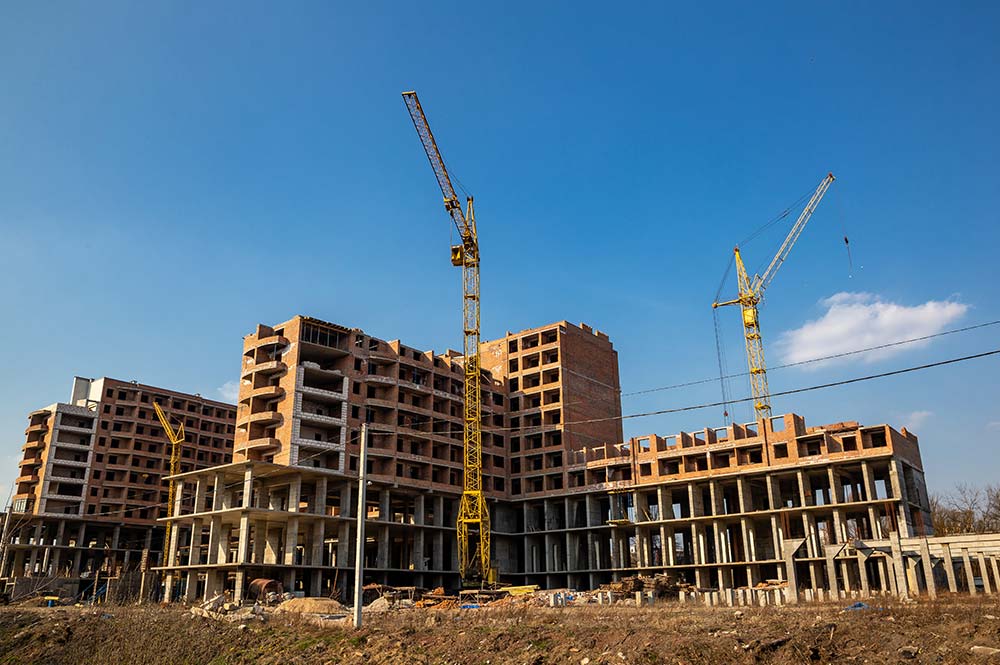Building a safer future: the courts’ approach to fire safety cases
The Grenfell tragedy in 2017 has prompted safety investigations in myriad buildings across the UK, with owners and occupiers questioning whether other settings are similarly defective. Many disputes have arisen, with a handful of cases now determined following trials in the Technology & Construction Court. Overall the courts have adopted a robust approach to responsibility for cladding defects, rejecting typical defence arguments around scope of duty, causation and assessment of loss.
Recent Judgments
Martlet Homes Ltd v Mulalley & Co. Ltd
In July 2022, the claimant was awarded £8 million in damages to remediate high rise residential blocks in Gosport where a “StoTherm Classic” cladding system, including combustible expanded polystyrene insulation, had been applied to external walls during refurbishment in 2005 - 2008. This was held to contravene fire safety standards (the specification breach case), and the system had been defectively installed with inadequate fire breaks (the installation breach case). Costs incurred in removal and replacement of the cladding with a non-combustible alternative could be recovered, together with expenses of a waking watch fire patrol interim measure.
St James’s Oncology SPC Ltd v Lendlease Construction (Europe) Ltd & another
In October 2022, a company set up by Leeds Teaching Hospitals NHS Trust to deliver a new oncology centre was successful in its £5 million claim against Lendlease, based on fire safety and electrical engineering defects to an internal plant room. The defendants’ argument that derogation from applicable standards had been approved by all parties in a revised fire strategy document was rejected, given the overriding contract obligations: “Lendlease was at all times responsible for the design of the Works and for achieving compliance with the requirements of the D&B Contract, irrespective of any review, approval or comments made by Project Co and/or the Trust. This seems … to render the question of approval otiose”.
LDC (Portfolio One) Ltd v George Downing Construction Ltd & European Sheeting Ltd
In December 2022, the owner of student accommodation blocks in Manchester secured judgment in excess of £21 million for remedial works and lost rental income, against a specialist sub-contractor responsible for inadequate fire stopping/barriers, and composite cladding defects which led to substantial water ingress. The claimant and first defendant agreed to settle the claims between them for c. £17 million shortly before trial; the second defendant was insolvent and unrepresented at the hearing, which proceeded in any event as the liquidator could not consent to judgment being entered.
Performance Standards
The defendant contractors were in each case appointed pursuant to JCT Design and Build Contracts, with terms including an unqualified design and specification duty, obligation to comply with statutory requirements, and duty to exercise reasonable skill and care.
The judgments include discussion on performance standards and reaffirm the MT Hojgaard [2017] UKSC 59 principle, that - if there are two clauses imposing different or inconsistent design requirements, the courts are likely to interpret the less demanding clause as a minimum obligation, since treating it as qualifying the other clause gives a meaning which effectively renders the more demanding provision redundant.
The St James’s Oncology and LDC (Portfolio One) cases illustrate how bespoke amendments to standard form contracts may be used to improve prospects for recovery down the contractual chain, through “back to back” requirements for sub-contractors to indemnify the employer against liability arising under the main contract as a result of sub-contract breaches, and acknowledging that associated losses are within the parties' contemplation.
Building Regulations
The analysis of statutory requirements is particularly illuminating, in view of ubiquitous disputes over interpretation of relevant provisions now acknowledged by the government to have been “faulty and ambiguous”.
In Martlet v Mulalley, the judge concluded that Approved Document B (“ADB”), Fire Safety, 2000 edition (with 2002 amendments) does not mean that whatever was not expressly prohibited was permitted and acceptable; and ADB, 2006 edition, marked a significant change in guidance from the earlier regime, with only materials of limited combustibility to be used as external wall insulation in buildings over 18 metres.
Further, the Building Regulations 2000, Schedule 1, B(4)1 requirement for external walls to “adequately” resist the spread of fire, having regard to a building’s height, use and position, turned on whether the contractor had followed guidance in BRE 135 (2003), which recommended that combustible cladding should not be used on high rise residential blocks unless it met the Annex A performance standard in accordance with the test method set by British Standard 8414-1. It was not sufficient to “blindly” rely on a British Board of Agrement (BBA) certificate for the cladding system.
Negligence
The selection and use of a cladding system with combustible EPS insulation in Martlet v Mulalley was in breach of the contractor’s obligation to exercise the degree of skill and care in its design of the work as would an architect or other professional designer.
In reaching this decision, the judge rejected defence arguments to the effect that they cannot have been negligent because everyone else was making the same mistakes. On a proper application of the Bolam principle, there must be “evidence of a responsible body of opinion that has identified and considered the relevant risks or events and which can demonstrate a logical and rational basis for the course of conduct or advice that is under scrutiny”. A defendant is not exonerated simply by proving that others were equally negligent (199 Knightsbridge Development Ltd v WSP UK Ltd [2014]).
Negligent design in relation to cladding works means that professional indemnity policies are likely to be triggered, and exclusions for contractual liabilities won’t usually apply.
Failure to comply with building regulations may be strong evidence of breach of a designer’s duty to exercise reasonable skill and care, in the absence of an express clause requiring adherence to statutory requirements, as discussed in LDC (Portfolio One).
Causation
Another defence commonly raised in cladding disputes is that enhanced fire safety standards implemented after completion of the contract works, and/or the changed regulatory perspective post-Grenfell, are the true cause of remedial action undertaken or proposed. This was rejected in Martlet v Mulalley, with the judge suggesting that an “effective cause” test would be more appropriate to a “but for” standard in this case, to avoid the claimant being left without a remedy.
Had the building owner succeeded only on the installation breach, it could have recovered the cost of repairing defects but not those of replacing the cladding. Both the installation and specification breach cases were upheld on the facts, so the owner was entitled to recover replacement costs.
Remedial Costs
In St James’s Oncology, the defendants’ argument that there was no intention to carry out remedial works was dismissed. The court is not normally concerned with how the claimant will use any damages awarded, providing the loss can be established, although intention may be relevant to the reasonableness of reinstatement and thereby the extent of loss. It was legitimate (and prudent) for the claimant to take account of commercial considerations and await conclusion of the proceedings before commencing planned remediation, given the defendants’ complete denial of liability until shortly before trial.
Remedial works to the Gosport towers were already complete when Martlet v Mulalley reached trial. Costs incurred are the starting point for what is reasonable in such cases, especially if works are carried out based on expert advice. The claimant has a duty to mitigate loss, “but the court will not be too critical of choices made as a matter of urgency or on incomplete information”. It is not sufficient that defects could have been rectified more cheaply; the defendant must prove the remedial scheme was unreasonable.
Further, the costs of temporary measures such as waking watch patrols are likely to be recoverable. The judge in Martlet v Mulalley dismissed the suggestion that this aspect of the claim was too remote, saying that any lack of awareness of the potential need for such interim protections in the context of combustible cladding was more reflective of a “culture of endemic complacency” than any reasoned assessment.
Where works of repair or reinstatement result in the claimant having a better or newer building than it would otherwise have had, a deduction for "betterment" will not usually be made if the claimant has no reasonable choice (Harbutt’s Plasticine v Wayne Tank [1970]). This includes betterment resulting from compliance with legislation introduced since the original works were carried out, imposing additional or enhanced standards.
Looking Ahead
The emerging direction of travel underlines the difficulty for designers (and insurers) in defending these types of claims.
The Building Safety Act 2022 provides further impetus on cladding disputes, introducing new causes of action for defective works and construction products, subject to a maximum 30 years’ retrospective limitation period. The Grenfell Inquiry phase 2 report is due for publication later this year, with Sir Martin Moore Bick’s findings expected to significantly impact upon the liability landscape, and potential manufacturer claims in particular.
Owners will look to progress claims swiftly in light of insolvency risks, with expert technical and quantum evidence crucial in justifying schemes of remedial work. Construction professionals with cladding exposures will be keen to extricate themselves through commercial settlements, whilst pursuing possible recoveries. Moving forward, contractors should endeavour to agree supply chains on back to back terms with their main contract, to limit exposures and improve prospects in the event of breach.
The courts’ focus on ensuring that buildings are made safe and compliant with current statutory requirements is closely aligned with public policy. Further developments in this area, including jurisprudence around Building Liability Orders and s.38 of the Building Act 1984, for example, are eagerly anticipated.
Authors:
Amy Lacey is a Partner at Fenchurch Law
Grace Williams is an Associate at Fenchurch Law
(New Home) Buyer Beware
Recent case law highlights the importance of adequate insurance cover for buyers of new homes, to remediate any latent defects identified post-completion, whilst the Building Safety Act 2022 implements significant changes to the new build warranty landscape.
In Griffiths and another v Gilbert [2022] EWHC 3122 (TCC) (6 December 2022), HHJ Sarah Watson (Principal Judge of the Technology and Construction Court in Birmingham) dismissed allegations that a director of the building contractor responsible for construction of the claimants’ property had fraudulently misrepresented that £2 million worth of NHBC cover would be obtained, covering the full build cost, rather than the standard £1 million limit for defects claims under the NHBC Buildmark policy.
After practical completion, a dispute arose concerning building defects and contamination of surrounding land. The claimants referred matters to the NHBC's dispute resolution service but subsequently withdrew from the process, unhappy with the initial response. Court proceedings alleging personal liability for fraudulent misrepresentation were commenced in 2014 and then stayed, pending the outcome of an arbitration pursued by the claimants against the contractor. In 2018 the arbitrator awarded substantial damages and costs to the claimants, which the contractor was unable to meet, and it went into insolvent liquidation. The claimants successfully recovered £1 million under the NHBC warranty, and court proceedings against the director were revived seeking recovery of outstanding losses.
The Judge held that elements of the tort of deceit were not made out in this case and the fraudulent misrepresentation claim failed. The director had confirmed the property would be built to NHBC standards and a Buildmark warranty would be obtained, but premium figures in the contract costings were estimates not representations. It was inherently unlikely the contractor would fraudulently represent the situation to save a small fee on a £2 million contract, knowing this would come to light when the NHBC certificate was provided. Further, NHBC was advised of the sale price at the outset with no question of “underinsurance”, analogous to standard property policies, where claims might be reduced if a building was insured for less than full reinstatement costs.
The judgment illustrates the limitations of new home warranties and how parties can extend the scope of cover for a price. In 2011, NHBC had offered to increase the cover to £2 million for an additional fee of approximately £4,500 but that proposal was not accepted by the claimants.
The importance of sufficient protection for buyers of new homes is also reflected in legislative changes under section 144 of the Building Safety Act. These provisions impose legal requirements on developers to provide new build warranties with a term of at least 15 years (increased from the usual 10 years period applicable previously), in line with the new prospective limitation period for claims under the Defective Premises Act 1972. Regulations are anticipated in 2023 imposing additional requirements on the kinds of defects covered, minimum policy limits, period during which the developer remains responsible, and financial penalties for non-compliance, following further industry consultation. Mandatory parameters of coverage should increase transparency for all concerned, helping to minimise the prospect of disputes.
Amy Lacey is a Partner at Fenchurch Law
Webinar - Differing Perspectives on the Building Safety Act 2022
Agenda
This webinar by Fenchurch Law’s Construction and Property Risks Group will be introduced by Joanna Grant, who leads the group and will feature sessions from Alex Rosenfield, Amy Lacey and Rob Goodship as follows:
Alex will address the new limitation periods for claims under the Defective Premises Act (which will either be 15 or 30 years, depending on when the claim accrued), as well as the new avenues of redress for claimants against (i) manufacturers or suppliers of construction products; and (ii) associated companies of subsidiaries or SPVs who undertook the original building work. The common objective of all of these claims is to ensure that, insofar as possible, leaseholders are not required to foot the bill for the significant costs of remediating defective buildings.
Amy will discuss the impact of the BSA for developers and managers of buildings with historical safety defects, including the “waterfall” approach to remediation costs implemented through industry levies, the Building Safety Fund and restrictions on service charge contributions for qualifying leaseholders.
Rob will round off with a discussion about the potential insurance implications for policyholders operating in the construction sector, focussing on those with emerging liabilities for historic works as a result of the retrospective change to the limitation period under the Defective Premises Act. This will include reference to difficulties policyholders may face under PI and PL policies, and how those difficulties might be managed.
Speakers
Alex Rosenfield, Senior Associate
Rob Goodship, Associate Partner,
Webinar - Damage: A Deep Dive
Agenda
This session will dig deeper into a subject touched upon briefly in David’s recent Defects Exclusions webinar. It will aim to provide a pathway through the leading authorities in relation to the various common types of damage encountered in construction projects, including physical rearrangement, overlaying of insured property with benign substances, and contamination. It will also look at the difference between development and discoverability in a damage context, and will consider the New Zealand case that arguably represents the higher water mark of damage authorities: Technology Holdings v IAG.
Speaker
Webinar - Insurance for Design Mistakes: a PI CAR Case Study
Agenda
This session focuses on the interplay/overlaps between CAR and PI policies in the context of a case study concerning a defectively designed roof which is damaged leading to various losses and claims against the policyholder. In particular, the session provides practical guidance on how the policyholder may approach claims under any CAR and PI policy in tandem including the strategic choices and implications.
Speakers
David Pryce, Managing Partner
Rob Goodship, Senior Associate
Co-Insurance, it’s a bit of a scrum
The Rugby Football Union v Clark Smith Partnership Limited & FM Conway Limited [2022] EWHC 956 (TCC)
This recent High Court decision once again shines a light on the tricky issue of co-insurance under project CAR policies, in particular the difficulties faced by contractors of all levels when trying to demonstrate the extent of cover in the face of a subrogated claim from project insurers.
It’s the most noteworthy judgment on the issues since Haberdashers’ Aske’s Federation Trust in 2018 (which, as we’ve stated previously, is a bad decision for policyholders), and is a helpful refresh of the issues, if only to remind parties to construction projects to ensure that the contractual arrangements for any project accurately reflect the intention and authority of the party obtaining insurance cover for others.
Background
The Rugby Football Union (“RFU”) was undertaking significant works at Twickenham in 2012 in order to prepare for the 2015 Rugby World Cup. It engaged Clark Smith Partnership Limited (“Clark Smith”) to design buried ductwork which was to contain power cables, and FM Conway Limited (“Conway”) to install it. RFU and Conway contracted on the basis of a JCT Standard Building Contract without Quantities 2011 (“the JCT”), some of which (but importantly not all) was the subject of agreed amendments.
RFU asserted that the ductwork was defective which caused damage to the cables as they were pulled through (by a third party), which resulted in replacement costs of £3,334,405.26, for which it was indemnified by the project insurers, Royal & Sun Alliance Plc (“RSA”).
The project policy contained a DE3 standard form defects exclusion, which meant that the cost of addressing the defective ductwork was excluded, but the remedial cost of the consequential damage to the cables was covered.
RSA sought to recover those sums from Conway (and Clark Smith) in a subrogated recovery action on the basis that the damage had been caused by its defective workmanship. In response, Conway issued Part 8 proceedings seeking a declaration that it was a co-insured under the project policy and that it had the benefit of cover to the same extent as RFU (as principal insured), which prevented RSA from bringing the subrogated claim against it.
Issues
In relation to the claim brought by RSA (in relation to which it stood in RFU’s shoes), Mr Justice Eyre was asked to consider whether the sums paid by RSA to RFU were irrecoverable because RSA could not exercise subrogation rights and/ or on a proper analysis of the project policy and/ or the contract documents that RFU and/ or RSA were not entitled to claim the insured losses.
The judgment contains a very useful summary of the law regarding co-insurance to date, including the basis on which subrogated claims between parties to an insurance policy can be barred by reason of circuity of action (Co-operative Retail Services Ltd [2002] UKHL 17) and the basis on which one insured may obtain cover for another (Gard Marine & Energy Ltd [2017] UKSC 35). However, the key aspect here was not the existence of cover in the first place, but the extent of that cover for a co-insured.
The specific consideration here was whether Conway had the benefit of the full cover under the project policy, which provided cover for damage to other property insured caused by Conway’s defective works, or whether its cover was restricted to damage caused by Specified Perils as provided for by the unamended part of the JCT.
Mr Justice Eyre was at pains to stress (guided by the above authorities, but also National Oilwell (UK) Ltd [1993] 2 Lloyd’s Rep 582) that the contract is key when determining the intention and authority of the principal insured when securing cover, stating:
“74. What is important is that the authorities are clear that in order to determine whether the insurance cover which a policy effected by, in my example, the employer or contractor applies to the contractor or sub-contractor and if to what extent (with the latter point determining the extent to which they are co-insured) it is necessary to look to the terms of the contract between those parties. It is those terms which provide the key to the existence and extent of the insurance cover.”
“88. … when a person becomes a party as a consequence of the actions of another person then the terms of the contract between the insured party and that other govern the extent of the insurance”
In relation to the intention and authority of RFU, Mr Justice Eyre found (despite witness evidence to the contrary relied on by Conway, that the insurance obtained by RFU was intended to be more extensive than envisaged by the JCT), that the contract documents read together (including the JCT) did not demonstrate an intention for the project policy to create a fund which would be the sole remedy for loss suffered by RFU as a consequence of a breach by Conway.
Whilst Conway was an insured under the project policy, the extent of that cover was that as envisaged in the JCT and no wider, such that it was not a co-insured in relation to the damage for which RSA had indemnified RFU. He went on to find (again consistent with National Oilwell) that the waiver of subrogation clause in the policy only related to the matters for which Conway had cover under the policy, and so didn’t prevent a claim by RSA.
Comment
This judgment doesn’t alter the previous state of the law in this area, but is a salutary reminder to make sure that the contractual documents are in line with the expectations of the parties.
Mr Justice Eyre indicated that “compelling evidence to counter the inferences from the natural reading” of the JCT may have altered the result (which is in line with the “other admissible material” referred to in National Oilwell), but that evidence was not present here. Rather, the judge found it “surprising” that the JCT was subject to amendment elsewhere, but not in relation to the insurance for the works. If the parties had intended the extent of cover to be different from that envisaged by the unamended JCT, then presumably it would have been simple enough to reflect that in an amended version of the JCT. The absence of those amendments seems to have been an important consideration in relation to the parties’ intentions.
If there’s an intention for members of the project team to have a benefit under any project policy, it is vital that the underlying contractual documents accurately reflect the full extent of the principal insured’s intention and authority in that regard.
Rob Goodship is a Senior Associate at Fenchurch Law
The Good, the Bad & the Ugly: 100 cases every policyholder needs to know. #16 (The Good). Technology Holdings Ltd v IAG New Zealand Ltd [2008]
Welcome to the latest in the series of blogs from Fenchurch Law: 100 cases every policyholder needs to know. An opinionated and practical guide to the most important insurance decisions relating to the London / English insurance markets, all looked at from a pro-policyholder perspective.
Some cases are correctly decided and positive for policyholders. We celebrate those cases as The Good.
Some cases are, in our view, bad for policyholders, wrongly decided, and in need of being overturned. We highlight those decisions as The Bad.
Other cases are bad for policyholders but seem (even to our policyholder-tinted eyes) to be correctly decided. Those cases can trip up even the most honest policyholder with the most genuine claim. We put the hazard lights on those cases as The Ugly.
#16 (The Good)
The Good
In another useful decision for policyholders under CAR policies (see our earlier article regarding ‘The Orjula’), but also damage policies generally, the High Court of New Zealand found (at para 65 of its judgment) that damage (as distinct from physical damage) can be established by one of more of:
a) a material risk to insured property which did not exist before the relevant event;
b) an event which rendered the insured property not fit for its intended use; and/ or
c) the possibility of malfunction during use as a result of the relevant event, which would require the insured property to be dismantled to determine the risk.
Whilst this authority isn’t binding on an English court, it would certainly be persuasive and the last category in particular is helpful to policyholders seeking cover for damage, as the mere possibility of malfunction which itself has not occurred would trigger cover under a policy responding to damage based on this authority.
The decision
The claimant supplied credit card terminals to retailers, 2,051 of which were stored in a basement that flooded on 7 February 2005. All of the containers in which the terminals were stored came into contact with flood water (but only around a quarter of the terminals themselves), and all containers were exposed to increased humidity. The claimant claimed under its Business Assets insurance policy (“the Policy”) for loss or damage to all of the terminals, the insuring clause in the Policy stating:
If during the Period of Insurance specified in the Schedule there happens Loss or Damage unintended and unforeseen by the Insured, except as may be excluded, to the PROPERTY AND EXPENSES INSURED, then the Insurers will indemnify the Insured in respect of such Loss or Damage as expressed in the BASIS OF LOSS SETTLEMENT and in addition the Insurers will indemnify the Insured in the manner and to the extent separately stated herein.
Despite being capitalised terms, Loss and Damage were not defined in the Policy. The claimant’s claim was accepted in relation to the terminals which came into direct contact with flood water, but insurers declined cover for the remaining terminals on the basis that they were neither lost nor damaged.
The court was asked to consider whether the insuring clause had been triggered in relation to the other terminals stored in the basement, essentially whether they were damaged because the manufacturer of the terminals had withdrawn its warranty and / or because the operator of the terminals’ intended network had refused to permit those units to be connected because of the risk that they would malfunction.
The claimant relied on expert evidence which included that it was standard industry practice for manufacturers to dismantle terminals returned to it to ensure their continued security and reliability following suspected damage. This, coupled with the low cost of producing terminals compared with the higher cost to dismantle, meant that terminals were often written off/ disposed of rather than being repaired.
The court’s analysis included a discussion concerning the difference between “physical damage” on the one hand and “damage” on the other, and concluded that the parties had intended the Policy to have the wider, unqualified damage cover, as opposed to cover being restricted to physical damage.
There was a detailed discussion of the damage authorities, including Transfield and Quorum AS, but most notably Ranicar v Frigmobile Pty Ltd, which the court regarded as the leading authority on “damage” in an insurance context. That case concerned scallops which could no longer be exported as they were temporarily and accidentally stored above -18 degrees Celsius, with that change in temperature being enough to constitute the physical change required to trigger cover for damage under the relevant insurance policy. The court in Ranicar held that whereas “physical damage” may require a permanent and irreversible change in physical condition, “damage” could occur when an adverse change in physical condition was both transient and reversible.
Deciding the Technology Holdings case, Woodhouse J (quoting a leading insurance text) said that the essence of Ranicar in relation to damage was that “it is normally sufficient if the damage is in the form of diminution in value or functionality”, but that element was not enough by itself – for damage something must happen to the property itself followed by the impairment in value or usefulness.
Applying Ranicar to the terminals which did not directly come into contact with flood water, Woodhouse J said that:
“…there was an occurrence – the flooding – which was unintended and unforeseen by the insured and which happened to the property. Following this event, which may or may not be similar to the temperature rise in Ranicar, the plaintiff found it could not sell the units. For the reasons discussed, I am satisfied that, if the plaintiff cannot prove that the units were “physically damaged”, there nevertheless will have been “damage to the property” for the purposes of the plaintiff’s Business Assets insurance policy if the plaintiff can establish the following: Because the units were stored in premises affected by flooding the units would malfunction during use in the network on a date earlier than the date on which the units would normally be withdrawn from use and in consequence they are not fit for their intended use”.
Comment
In addition to helping to cement Ranicar’s status as a leading authority on damage in the insurance context, it arguably goes one step further by holding that the mere possibility of malfunction was sufficient to constitute damage where that risk impacting on value or usefulness. The logic of the decision is sound, and merely extends existing principles rather than taking an entirely new approach, and the decision is certainly Good for policyholders.
Rob Goodship is a Senior Associate at Fenchurch Law
Webinar - Defects Exclusions under CAR policies
Agenda
Defects Exclusions give rise to a variety of difficult issues. This webinar will address some of those, including the overlapping concepts of inherent vice, defective condition, damage, and physical damage, as well as considering how to determine the value of what is excluded by the most commonly used clauses.
David Pryce is the Managing Partner of Fenchurch Law
(De)sign of the Times: Blurred Lines on Build Performance Liabilities
Design requirements are at the heart of any construction contract, and the precise formulation of applicable standards is crucial to evaluation of risk. Recent trends indicate that designers in the UK construction industry are assuming increasing levels of liability on build performance, with significant implications for coverage under professional indemnity insurance.
In Arbitration Appeal No 1 of 2021 [2021] CSOH 41, the Scottish Court of Session recently considered the interpretation of deemed design liability clauses, and upheld a provision imposing responsibility on a consultant for designs pre-dating its appointment and which had been proposed without its involvement. Whilst similar clauses may be given a narrower interpretation in a multi-disciplinary design context involving several third party consultants, the scope of such provisions should be carefully considered at the outset, to limit exposure and potential uninsured loss.
Reasonable Skill & Care vs. Fitness for Purpose
A contractor or professional with design responsibility should exercise reasonable skill and care, based on standards expected of an ordinary skilled person performing and professing to have that special skill, so that liability will not arise unless they have acted negligently.
Express contract terms often impose more onerous fit for purpose type obligations, providing a warranty that the works will conform to specified employer requirements. Liability arising from a higher contractual standard than that imposed by ordinary common law, including certification of compliance with specified design, will usually fall outside the scope of cover under professional indemnity insurance.
Strict liability can be implied in relation to design elements of work under a design and build contract (Viking Grain Storage v TH White Installations (1985) 3 Con. L.R. 52); or where the contractor is informed of the purpose for which the works are required and the employer relies upon the contractor’s skill and judgement (Greaves v Baynham Meikle [1975] 1 W.L.R. 1095).
Industry standard forms address the issue in different ways, with JCT contracts requiring reasonable skill and care, whilst all FIDIC contracts impose some degree of fitness for purpose obligation. This divergence in part reflects the usual approach in different industry sectors, with design and construction contracts for energy or infrastructure projects typically including output specifications capable of measurement through testing, as compared with the performance standard ordinarily assumed by an architect or other professional designer in the real estate development sector.
Conflicting Standards
In MT Højgaard v E.ON [2017] UKSC 59, the Supreme Court considered a contract containing both a reasonable skill and care obligation, and a warranty ‘tucked away’ in a technical schedule requiring a service life of 20 years. The latter took precedence, in circumstances where wind turbine foundations designed and installed by the defendant in accordance with the claimant’s requirements and certifying authority’s specification began to fail during the defects period, due to a subsequently identified error in a value in the authority’s specification. The case demonstrates that a contractor can be found to assume the risk if they have agreed to work to a design which would render the item incapable of meeting the performance criteria.
An obligation to ensure that works constructed in accordance with the build design “shall meet the requirements described in the Specification” may be construed as imposing strict liability, notwithstanding the designer having separately undertaken to exercise reasonable skill and care (Costain v Charles Haswell & Partners [2009] EWHC 3140). This depends on the particular contract wording, however, and conversely a design and build contract requiring a consultant to comply with a specific design, alongside an obligation to act with reasonable skill and care, may be construed on the basis that the obligation to comply with the specification is to be read as expressly or impliedly subject to the reasonable skill and care provision (MW High Tech Projects v Haase Environmental Consulting [2015] EWHC 152).
For complex contracts incorporating schedules from multiple sources, a priority of documents provision may be helpful to deal with potential inconsistencies.
Implementation of Design
Following on from the decision in SSE Generation v Hochtief Solutions [2018] CSIH 26, we are seeing an increase in professional indemnity disputes based on a distinction between preparation and implementation of design, with reference to the scope of ‘professional activities’ defined in the policy and declared in the proposal form.
In SSE Generation, a design and build contractor was held liable under the NEC2 contract for costs of repairing a tunnel collapse at the Glendoe hydroelectric power scheme in Scotland, due to breach of contract requirements on appropriate support for erodible rock encountered in a fault zone. The court decided by a majority that Hochtief could not rely on a limitation of liability for design defects, despite having exercised reasonable skill and care in preparing the design statement, as the damage was caused by implementation of design.
This conclusion was reached in light of specific contract terms and the interface between design and its implementation is highly fact sensitive (Bellefield Computer Services Ltd v E Turner & Sons Ltd [2002] EWCA Civ 1823), particularly in cases involving complex construction and engineering decisions.
Design Life
Construction contracts often require completed works to deliver a specified minimum ‘design life’.
The meaning of this concept was considered in Blackpool B.C. v Volkerfitzpatrick [2020] EWHC 1523, a case concerning alleged premature corrosion to a tram depot situated in a seafront location. The court referred to relevant British Standards on service life planning and structural design in concluding that an acceptable level of not “unusually onerous” maintenance is a key ingredient of performance expectations for individual parts of a building, and a specified design life implies that “major repairs” should not be needed during that period. The extent of standard maintenance will be a matter of fact and degree, which could be addressed in O&M manuals produced by the contractor.
Depending on the words used in the contract, several discrete obligations may be separately imposed and cumulatively applied to the design life and quality of particular components within a complex structure (125 OBS (Nominees1) v Lend Lease Construction [2017] EWHC 25).
Conclusion
In view of ongoing hard market conditions, policyholders are understandably reluctant to accept requirements outside the scope of conventional insurance cover, with extensive negotiation on design risk allocation at the pre-contract stage often resulting in a form of compromise wording.
The nuanced approach adopted in recent court rulings demonstrates a blurring of lines between the traditional reasonable skill and care vs. fitness for purpose dichotomy, acknowledging that different standards can apply to various aspects of design under a single contract.
Designers should exercise particular caution in relation to deeming provisions in appointment documents and standard form contracts, imposing liability for plans initially developed by the employer or third parties.
To avoid ambiguity, contractors and consultants should expressly exclude fitness for purpose obligations where possible, and consider inclusion of contract terms defining the output of building design, with reference to intended maintenance procedures. Where exclusion of fitness for purpose obligations cannot be agreed, policyholders should talk to their brokers and insurers to obtain clarity about the extent to which any onerous contractual obligations are covered by their professional indemnity insurance.
Amy Lacey is a Partner at Fenchurch Law.
Weathering the Hard Market: is your CAR Policy Watertight?
The increasing prevalence of water damage losses on construction projects, combined with hard market conditions, has led to a rise in disputes over insurance policy response for these types of events. Claims in consequence of cascading water from burst pipes or adverse weather conditions often give rise to disagreements over the occurrence and timing of ‘damage’, in order to trigger coverage under contract works policies, and a number of standard exclusion clauses may impact upon the level of protection.
Insuring Clauses
The legal test for damage requires proof of physical change to insured property, adversely affecting its value or usefulness. Authorities demonstrate a distinction between policies requiring ‘damage’ - which includes transient or reversible changes if time and money has been spent dealing with the problem (Ranicar v Frigmobile; The Orjula) - as opposed to policies with a ‘physical damage’ trigger, which may not respond in the absence of a permanent alteration in condition (Transfield Constructions v GIO).
The need for coverage in respect of temporary changes is particularly important in water damage scenarios, where the insured property could dry out relatively quickly. Insurers might suggest that no lasting damage remains, even if the policyholder has been put to considerable expense and inconvenience through a water ingress event, especially where guarantees relating to electrical elements of contract works may be invalidated.
It is sufficient for physical change to have occurred at a microscopic level, detectable only through careful examination using advanced inspection techniques, such as accumulation of dust on carpets (Hunter v Canary Wharf) or increased brittleness and liability to early degradation of a pastel painting following exposure to high temperatures (Quorum v Schramm). Accumulations of water can result in physical changes to insured property in the form of rot or fungal spores, especially in close proximity to timber elements, although expert assistance may be required to identify the presence of this type of damage.
Exclusions from Cover
Contract works policies typically exclude cover for damage resulting from changes in the water table level, and may refer to fungus or rot alongside other naturally occurring processes as part of a gradual deterioration exclusion.
Another key aspect of the policy wording determining the scope of protection for water damage events are relevant defects exclusion clauses. Contract works insurance usually contains a standard defects exclusion based on the DE or LEG suite of options, offering different levels of coverage for cost of repair associated with defective design, workmanship or materials. Failed connections in water systems may involve a combination of design or workmanship problems, and the proximate cause of loss will often need to be identified to determine policy response.
DE5 or LEG3 usually provide the broadest coverage for losses in consequence of defects, to include costs incurred to gain access to property damaged as a result of defects, and excluding only the cost of improvements. Some policies provide an option as to application of DE5 or DE3 / LEG3 or LEG2, at the policyholder’s option at the claims stage, allowing flexibility to determine which alternative produces the most favourable outcome with knowledge of the particular circumstances arising.
Some standard exclusion clauses (such as DE4) provide cover for damage to ‘other property’ caused by defects, but not the defective ‘part’ itself, which often leads to disputes over divisibility of insured property between defective and non-defective parts. In general terms, the courts will look to the commercial reality of whether a particular aspect of the development would be viewed by contracting parties as a separate package or phase of works (Seele Austria).
The aggregation wording in the policy may also impact upon coverage for complex aspects of contract works, such as structures formed from separate sections or modular elements, with the possibility of insurers arguing that multiple ‘losses’ have occurred for purposes of the limits of indemnity and deductible.
Policy Conditions
Careful consideration should be given to policy conditions requiring particular steps to be taken in relation to risk mitigation and claims handling.
In order to establish breach of a ‘reasonable precautions’ condition, the insurer must prove recklessness i.e. the insured subjectively appreciated the risk but didn’t care or ignored it; mere negligence will not suffice (Sofi v Prudential). This is distinguishable from policy requirements imposing positive continuing obligations on insureds to take specific actions, such as unoccupied buildings conditions. The recklessness threshold will not apply where there is “a highly defined and circumscribed set of particular safeguards which have to be put in place” (Aspen Insurance v Sangster).
Insurers are increasingly focused on water damage risk management procedures as part of the underwriting process, and may include specific provisions in the policy requiring compliance with e.g. CIREG best practice guidelines. The inclusion of ‘conditions precedent’ should be resisted, with use of appropriate ‘best endeavours’ type language especially if works on site involve third party sub-contractors, so that compliance with the condition is not entirely within the policyholder’s control.
Conclusion
Advice should be sought from specialist brokers on potential improvements to the scope of insurance for contract works, with particular reference to the trigger for coverage, exclusion clauses and policy conditions. When a loss does occur it is important to investigate and document the condition of insured property without delay following a water damage incident, with expert input if required, to minimise the prospect of insurance disputes.
Amy Lacey is a Partner at Fenchurch Law











